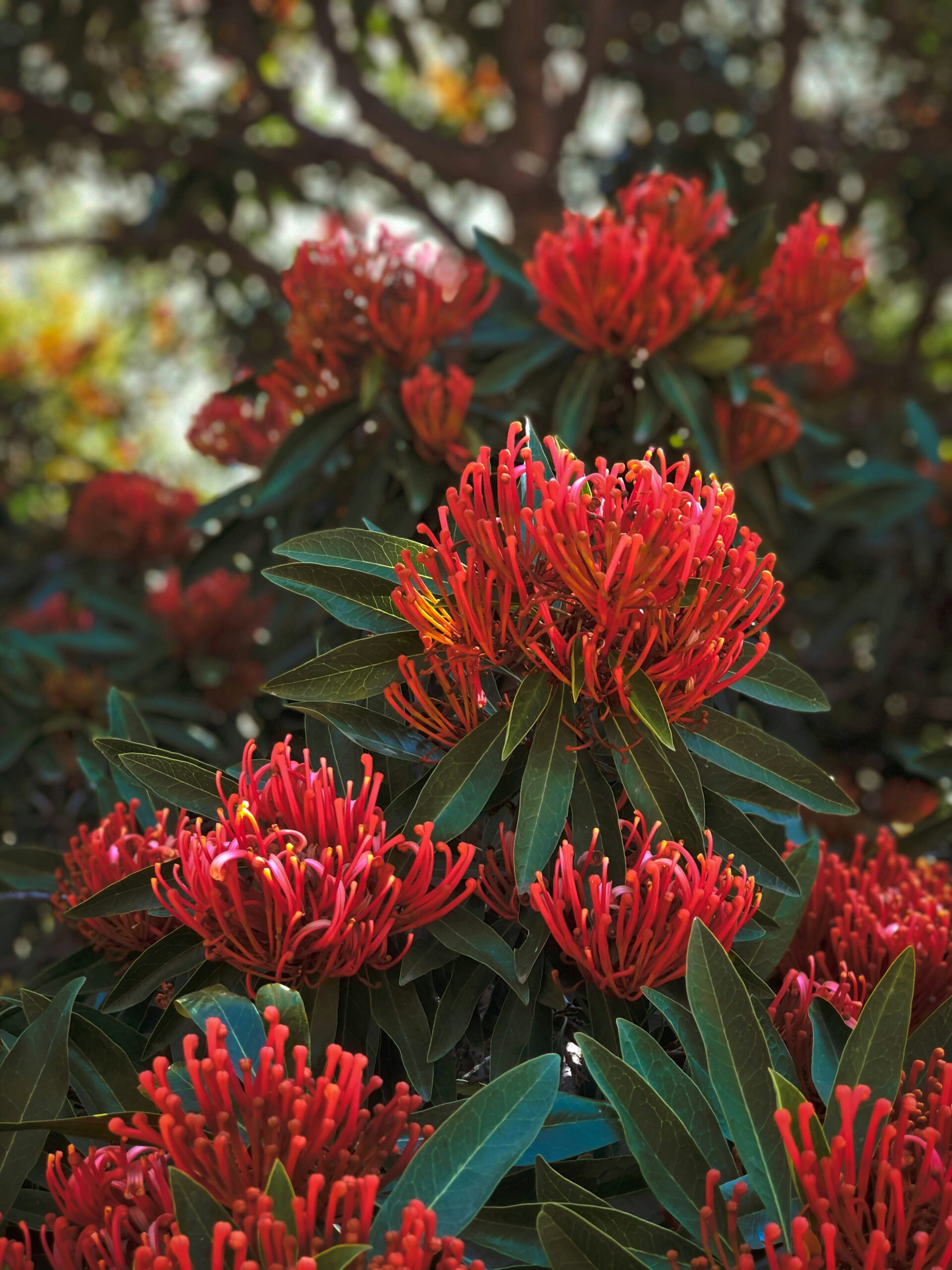He Nopal Santa Rita (Opuntia santa rita) is a visually striking plant native to the southwestern United States and parts of Mexico. It is known for its vibrant purple pads, which take on a deeper color during cold or dry conditions.
This low-maintenance cactus is ideal for gardeners looking for a hardy, colorful addition to their landscape. In spring, it blooms with bright yellow flowers, enhancing its ornamental appeal.
Here are 10 interesting facts about the Opuntia Santa Rita cactus:
Scientific Ranking #1:
The Santa Rita prickly pear is also known as Opuntia Santa-rita. santa-rite and Opuntia chlorótica var. santa-rita. In Spanish it is called Duraznilla or Nopal Morado..
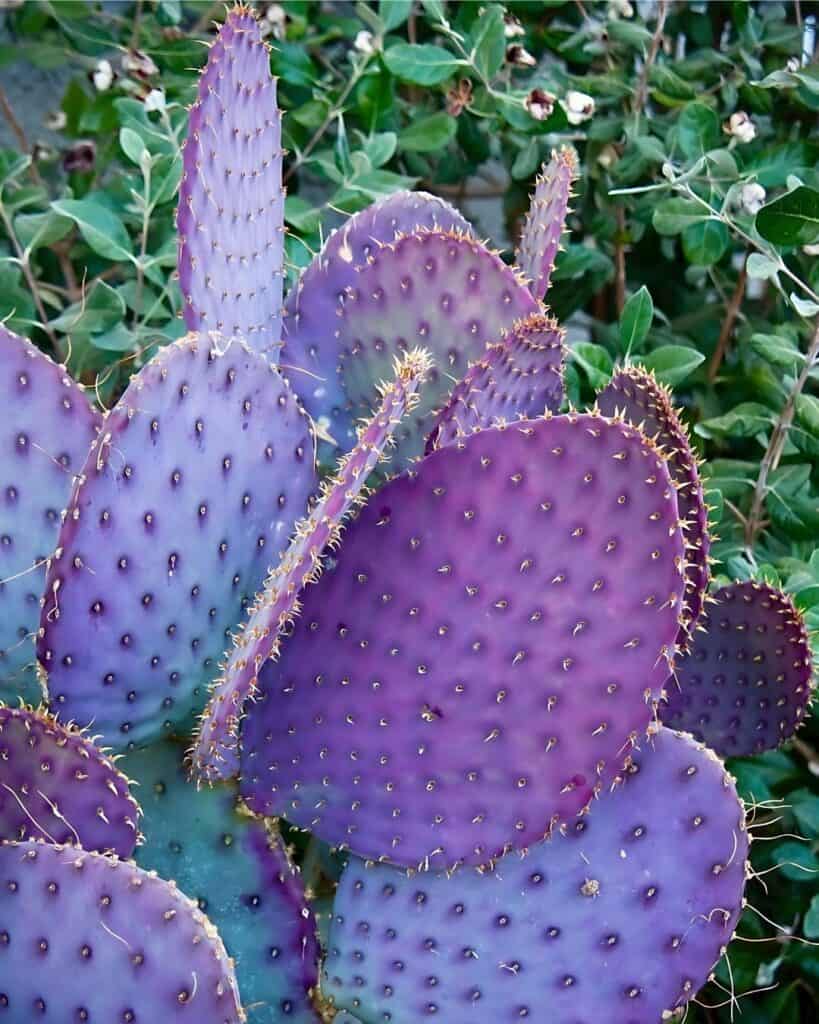

#2 – Native Habitat
This cactus is native to the southwestern United States, including Arizona, Texas, and New Mexico, as well as Sonora, Mexico. It thrives at elevations between 2,000 and 4,000 feet..
NOTE: According to the Third Edition, 2020: Field Guide to Arizona Cacti and Other Succulents. Opuntia Santa-rita is located in Arizona. Opuntia gosseliniana is found only in Mexico.
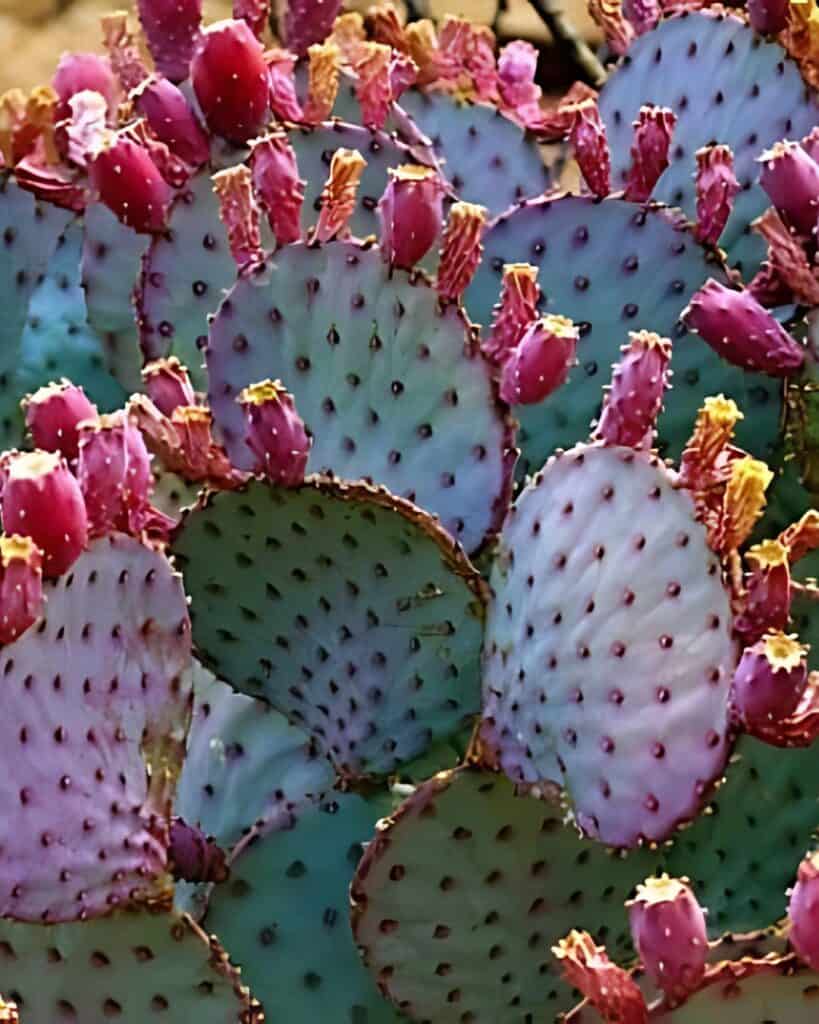

#3 – Distinctive appearance
The Santa Rita prickly pear is known for its vibrant colors, with pads ranging from purple to green. The intensity of the purple color increases in cold or dry conditions..
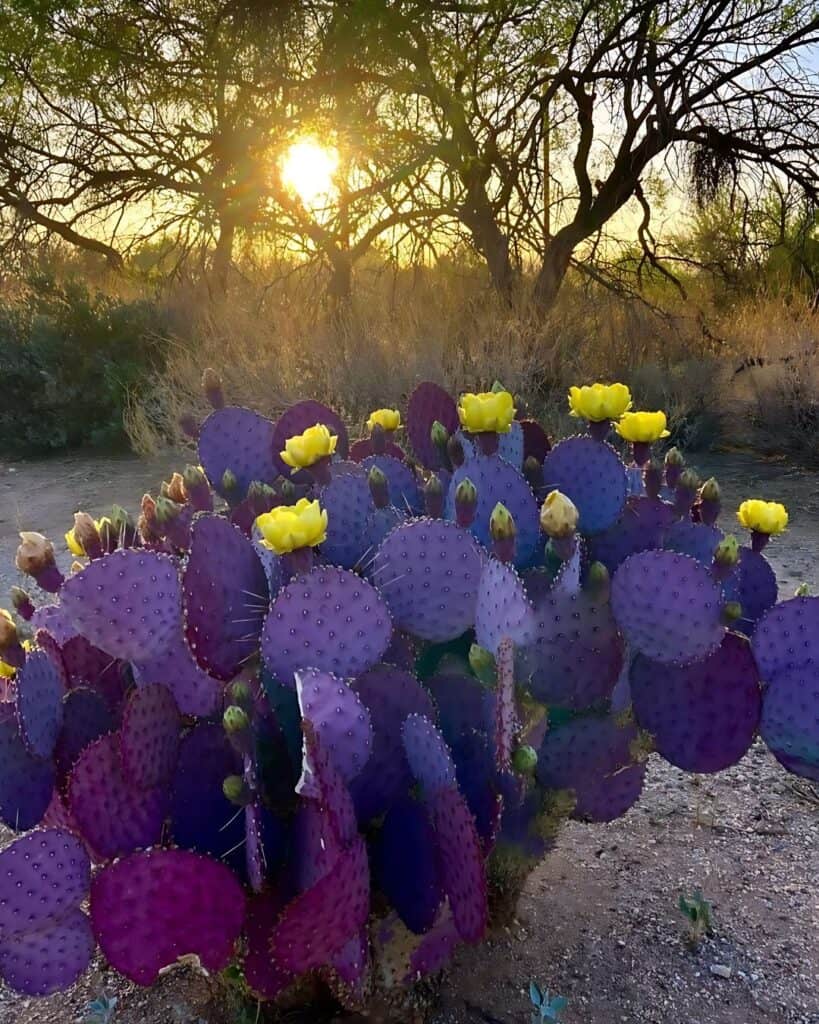

#4 – Flowering and fruiting
It produces bright yellow flowers in spring, which later develop into small purple fruits. The flowering season usually runs from April to June..
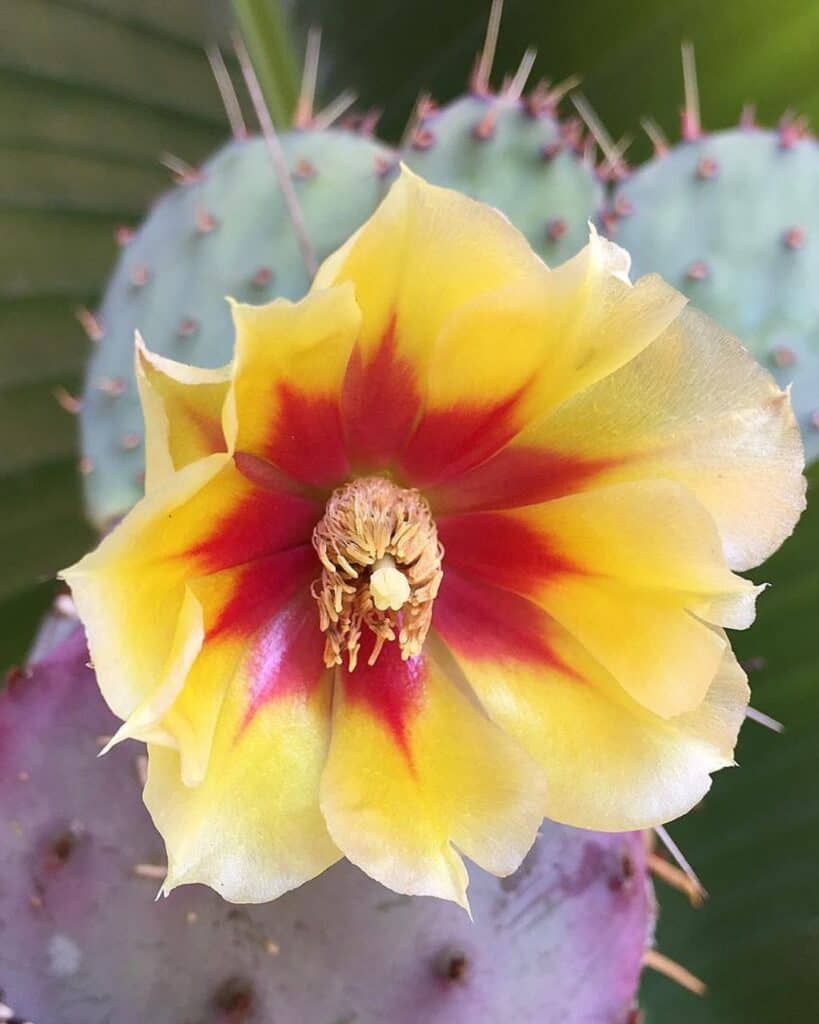

#5 – Edibility
Both the pads and the fruit of the Santa Rita Prickly Pear are edible, although it is advisable to remove the thorns before consumption..
#6 – Size and growth
This cactus can grow up to 6 feet tall and wide. It has a low-growing bushy form with a short trunk and multiple flat pads..
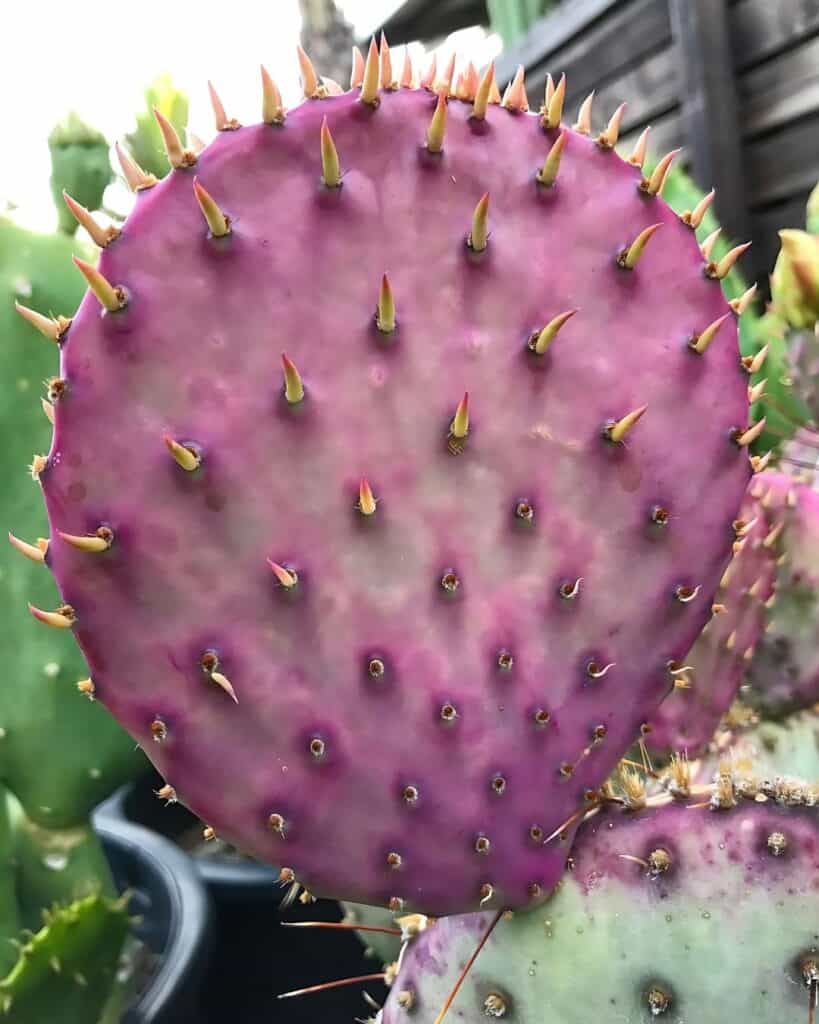

#7 – Adaptability
The Santa Rita prickly pear is drought tolerant and can survive in a variety of soil types, as long as they are well drained. Requires full sun but can tolerate partial shade..
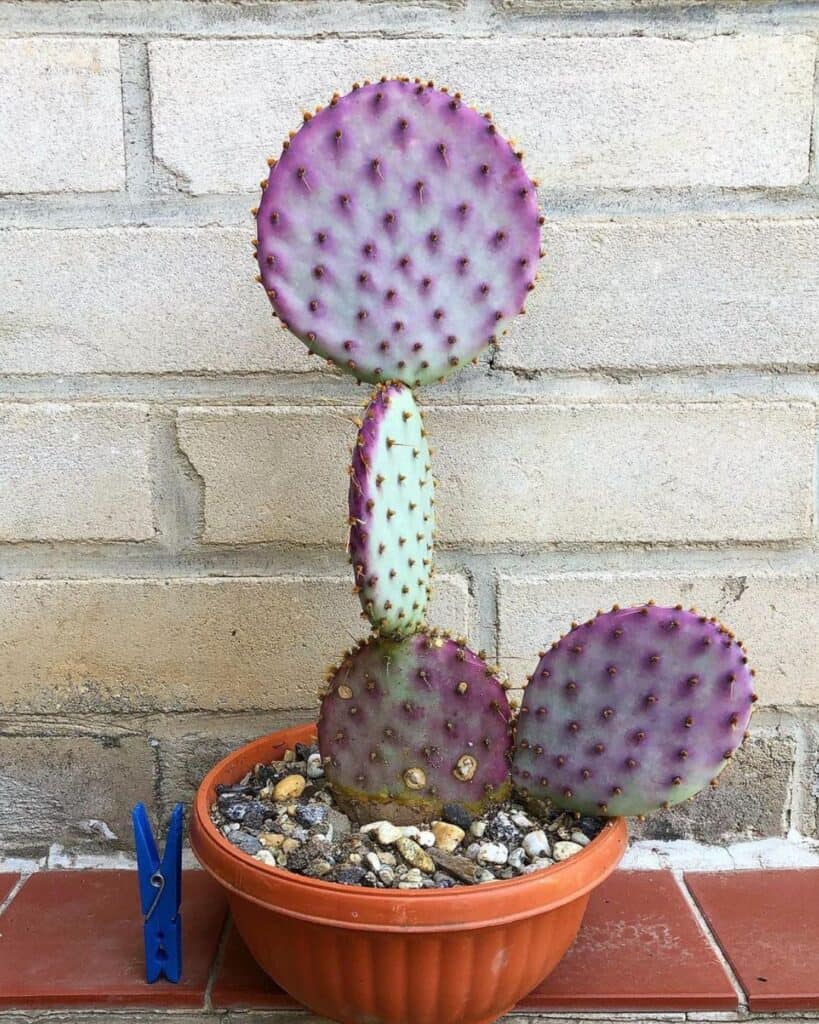

#8 – Temperature tolerance
It is resistant to temperatures as low as 15 degrees Fahrenheit, making it suitable for a variety of climates..
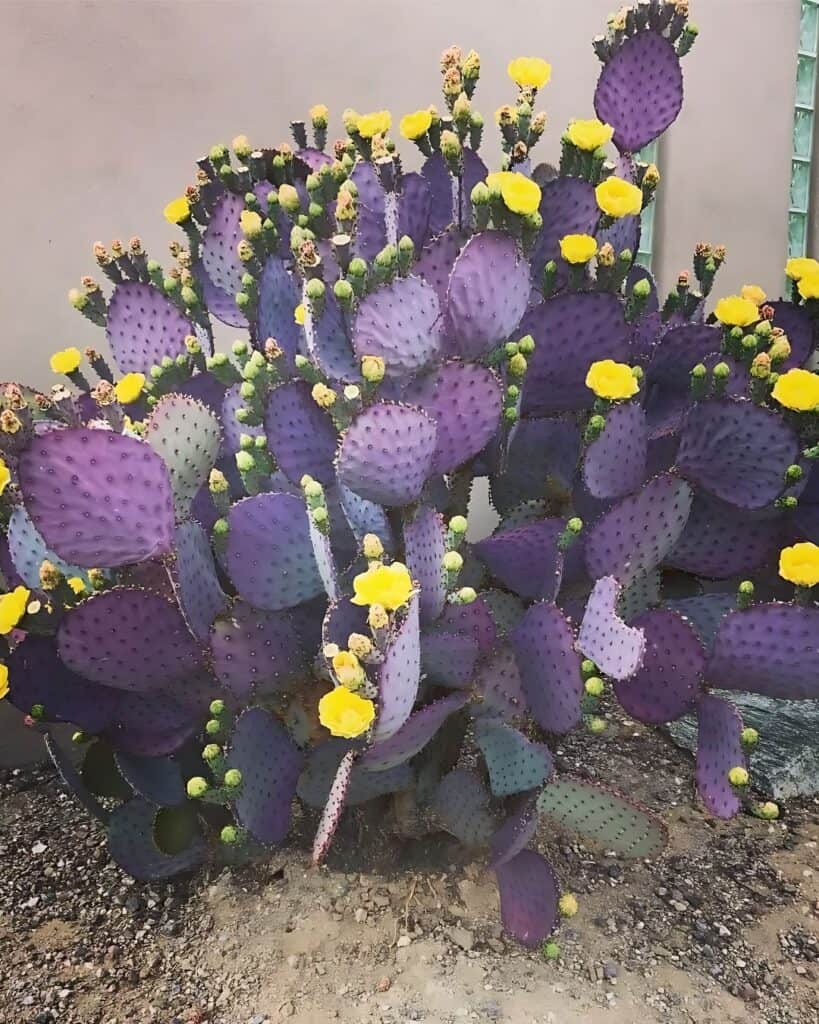

#9 – Resistance to pests and diseases
This cactus is relatively resistant to diseases and pests. However, it may be susceptible to mealybug scale, which appears as white, cottony tufts on the plant..
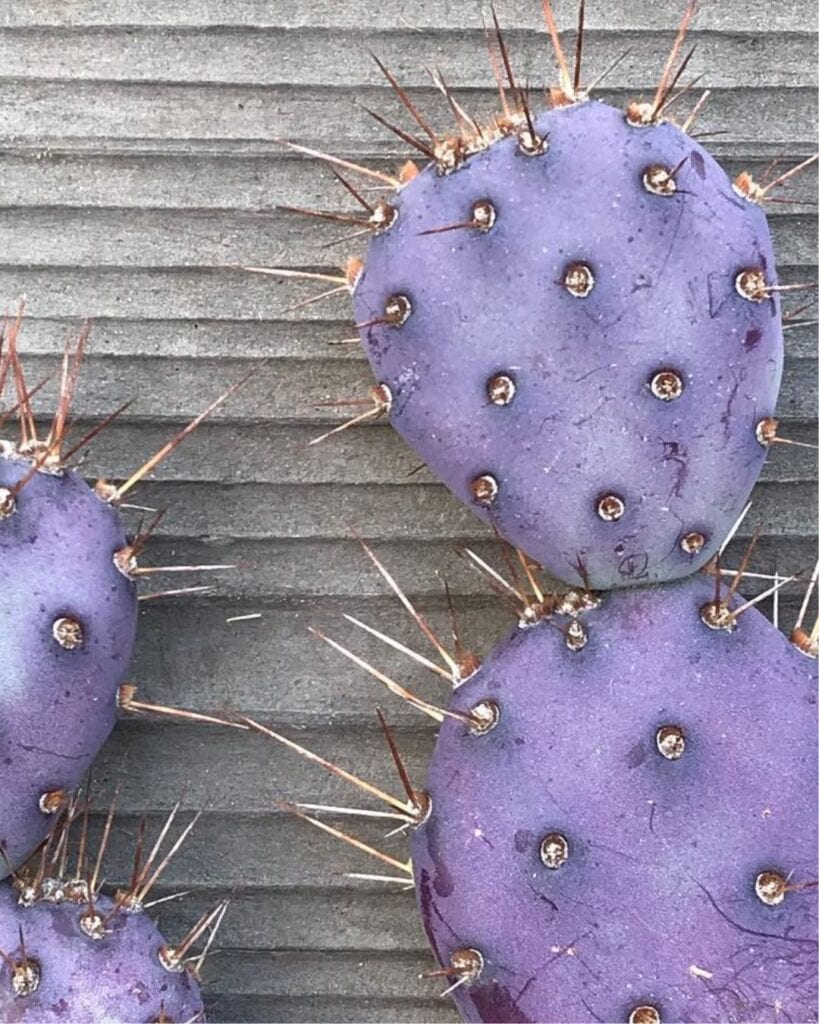

#10 – Cultural importance
Historically, scale insects that live in cactus plants were used to produce a red dye highly valued in Europe, especially for dyeing royal clothing and military uniforms..
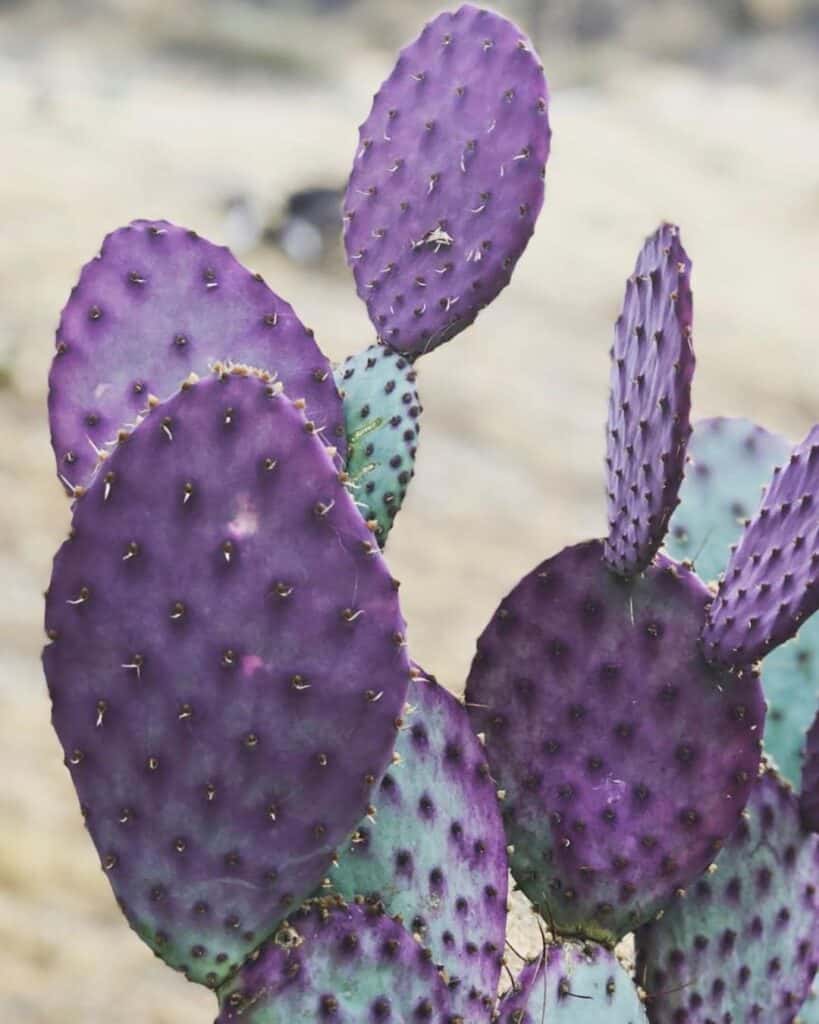

The Santa Rita cactus is a hardy and visually captivating plant, perfect for dry gardens. Its vibrant colors, low maintenance, and adaptability make it a standout choice for gardeners seeking beauty and durability in their landscapes.



